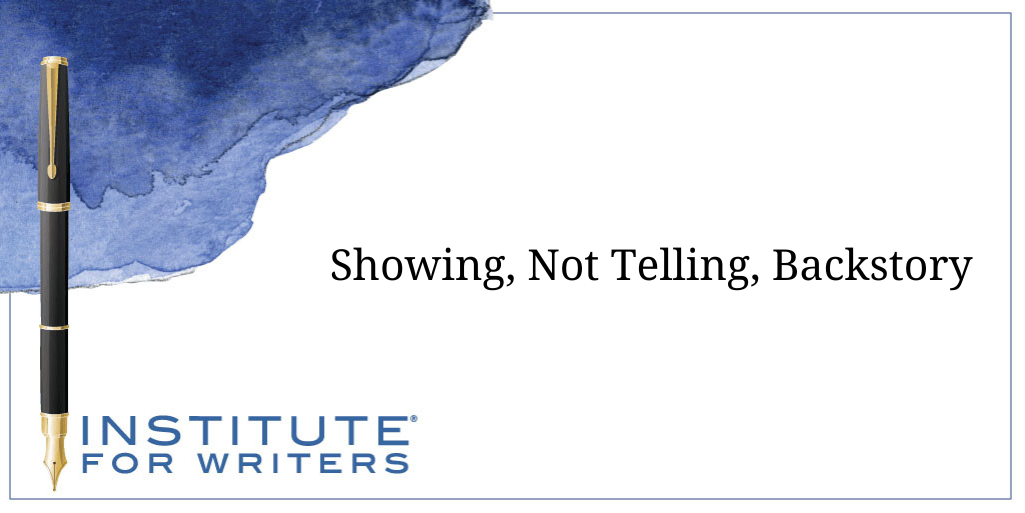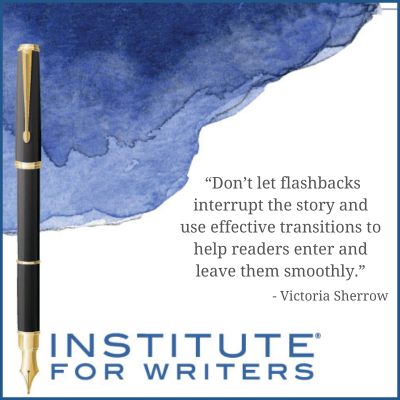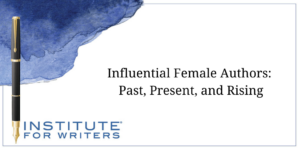
Why Submitting to Contests is a Win-Win
Should you enter a writing contest or not? If your writing rises to the top, you just might win a prize upwards of thousands of dollars if you’re lucky.

Did you ever read (or write) a story that began something like this?
 Thirty-six-year-old Jan left the airport in a cab. During the drive, she noticed a newspaper on the seat but didn’t feel like reading. She was taking two weeks off from her job as a stockbroker in Chicago to visit her Kentucky hometown—her first visit in three years. She wasn’t happy about it. As they drove through town, she concluded that things looked much the same as when she left at age 18 to attend college in Chicago. There was the dry-cleaning shop her father had managed for 40 years . . . the post office . . . the diner where she and her friends often gathered. She recalled those nights there with her high school boyfriend Harley eating fried mozzarella sticks with tomato sauce. She wondered if Harley was still married. She herself remained single. They passed the flower shop where she had worked during school vacations. Jan’s thoughts turned to her reason for coming here, to help her siblings make plans for their father, a 78-year-old widower with dementia. Jan dreaded dealing with her controlling older brother.
Thirty-six-year-old Jan left the airport in a cab. During the drive, she noticed a newspaper on the seat but didn’t feel like reading. She was taking two weeks off from her job as a stockbroker in Chicago to visit her Kentucky hometown—her first visit in three years. She wasn’t happy about it. As they drove through town, she concluded that things looked much the same as when she left at age 18 to attend college in Chicago. There was the dry-cleaning shop her father had managed for 40 years . . . the post office . . . the diner where she and her friends often gathered. She recalled those nights there with her high school boyfriend Harley eating fried mozzarella sticks with tomato sauce. She wondered if Harley was still married. She herself remained single. They passed the flower shop where she had worked during school vacations. Jan’s thoughts turned to her reason for coming here, to help her siblings make plans for their father, a 78-year-old widower with dementia. Jan dreaded dealing with her controlling older brother.
This sample paragraph contains lots of backstory—information about the setting, the main character, her past, her family, and events that occurred before this story began. The term “information dump” is often used to describe writing that feels like the author stepped in and announced, “Let me tell you some things before we move on with the story.”
Backstory does have its purpose, but although this paragraph contains information readers may want at some point, they don’t need so much so soon, presented in this dull manner. Such writing reduces suspense and removes readers from the “now” of a story. The pacing also suffers when authors stop or slow down a story with this kind of “telling.” Instead, we can write in ways that let readers experience events, using “show, don’t tell” (SDT) to gradually supply backstory.
As with other writing decisions, we choose what backstory to include, and when, and how. Consider these things as you write:
Craft a dramatic opening.
The prolific author Phyllis Whitney advised writers to start a story with someone interesting doing something interesting. We can anchor readers in the present with engaging scenes that help them care about the character, then weave relevant backstory into the ongoing action.
Connect backstory to present events.
 Look for opportunities to show, not tell, facts. For example, what triggers a character to think or talk about certain things? In the sample paragraph, Jan might glance at the business section of the newspaper and see an article about a stock she could recommend to her brokerage clients. This shows readers her profession instead of stating a fact. Or, perhaps she sees an article about the type of dementia afflicting her father. Depending on Jan’s personality, she might flinch and push the paper aside, feel tears sting her eyes, or read the article with interest. Later, she might shudder or smile when she passes a building in town. Her physical sensations and reactions help readers form conclusions.
Look for opportunities to show, not tell, facts. For example, what triggers a character to think or talk about certain things? In the sample paragraph, Jan might glance at the business section of the newspaper and see an article about a stock she could recommend to her brokerage clients. This shows readers her profession instead of stating a fact. Or, perhaps she sees an article about the type of dementia afflicting her father. Depending on Jan’s personality, she might flinch and push the paper aside, feel tears sting her eyes, or read the article with interest. Later, she might shudder or smile when she passes a building in town. Her physical sensations and reactions help readers form conclusions.
Use dialogue and internal monologue.
Dialogue can add life, interest, and SDT to scenes. For instance, if Jan talks with the cab driver, she might say she hasn’t been in town for three years. She might text a friend in Chicago, saying “the old hometown hasn’t changed.” At times, internal monologue showing her direct thoughts could add variety and emotion, along with clues about her personality and relationships—e. g.: My brother never listens to me. He’ll take over like always.
SHOW character backstory.
As writers, we may develop detailed profiles about a character’s past, family, education, jobs, spiritual beliefs, talents, weaknesses, hobbies, and more. This knowledge can help us bring characters to life, but we need to be selective. We can show readers who the characters are as the story moves forward. When readers learn too much too soon, they have fewer questions, so they are less motivated to read and find out. A revised version of my example above could share just enough about Jan to set the scene and dramatize her emotional conflict.
Here are examples of such “showing”:
TOLD: Rory weighs 288 pounds and can’t resist overeating, although he has tried many diets and even joined an Overeaters Anonymous group last year.
SHOWN (using action, internal monologue, and body language during mealtime at a family reunion picnic):
With mouth watering and plate in hand, Rory surveyed the table packed with food people had brought. He paused beside a vast green salad. Yeah, I should probably eat that, and maybe some fruit for dessert. But hey, this is a celebration! Up ahead were the dishes he loved—potato salad, mac and cheese, barbecued pork on thick buns, creamed corn, and a dessert table covered with cookies, pies, and cakes. Plate overflowing, Rory ignored his sister’s raised brow and disapproving frown. Last year, she’d talked him into joining Overeaters Anonymous. A lot of good that had done!
TOLD: Luka was a helpful person his family and friends could rely on.
SHOWN (with dialogue, action, and body language):
 Luka finished installing the battery and shut the hood. “Try starting it,” he told Marty.
Luka finished installing the battery and shut the hood. “Try starting it,” he told Marty.
As the motor hummed, Luka smiled and gave Marty a thumbs-up.
“What would I do without you, man?” Marty said. “You rescued me last time my battery died, not to mention replacing my tires.”
“Glad to help,” Luka said, wiping his hands on a towel.
“Want a cold drink?” Marty asked.
Luka shook his head. “No, thanks. I promised to sub for a guy at work, then I’m heading to my folks’ house. Gotta rake those fall leaves and bag ‘em.”
In general, say editors, keep flashbacks short and don’t use them too soon or too often. Some experts advise against flashbacks in the opening chapter before readers have become involved in the characters’ current lives. Flashbacks may also be more effective when they follow a particularly dramatic scene. Don’t let flashbacks interrupt the story and use effective transitions to help readers enter and leave them smoothly.
As you decide what backstory to include and when, ask yourself: Would the character need to share this information with readers at this time? If the answer is “yes,” find a natural and effective way to show it, using action, dialogue, internal monologue, sensory details, and/or body language.
Victoria Sherrow has published short stories, articles, poetry, and books for ages preschool through adult. Her books have received starred reviews and been honored by the American Library Association, Parents Choice Gold Award, National Association for the Advancement of Science, and NYPL Best Books for the Teenage, among others. An avid reader and writer since childhood, she loves helping her students use their unique experiences and writing styles to create stories and books.

Should you enter a writing contest or not? If your writing rises to the top, you just might win a prize upwards of thousands of dollars if you’re lucky.

To many, writing is revision, and most writers revise their manuscripts numerous times before they’ve shaped it into the best version that it can be.

We’re going to look at influential female authors of the past, those impacting the present, and whom the industry expects to make a big splash.
1000 N. West Street #1200, Wilmington, DE 19801
© 2024 Direct Learning Systems, Inc. All rights reserved.

1000 N. West Street #1200, Wilmington, DE 19801
© 2025 Direct Learning Systems, Inc. All rights reserved.

1000 N. West Street #1200, Wilmington, DE 19801
©2025 Direct Learning Systems, Inc. All rights reserved. Privacy Policy.
1 Comment